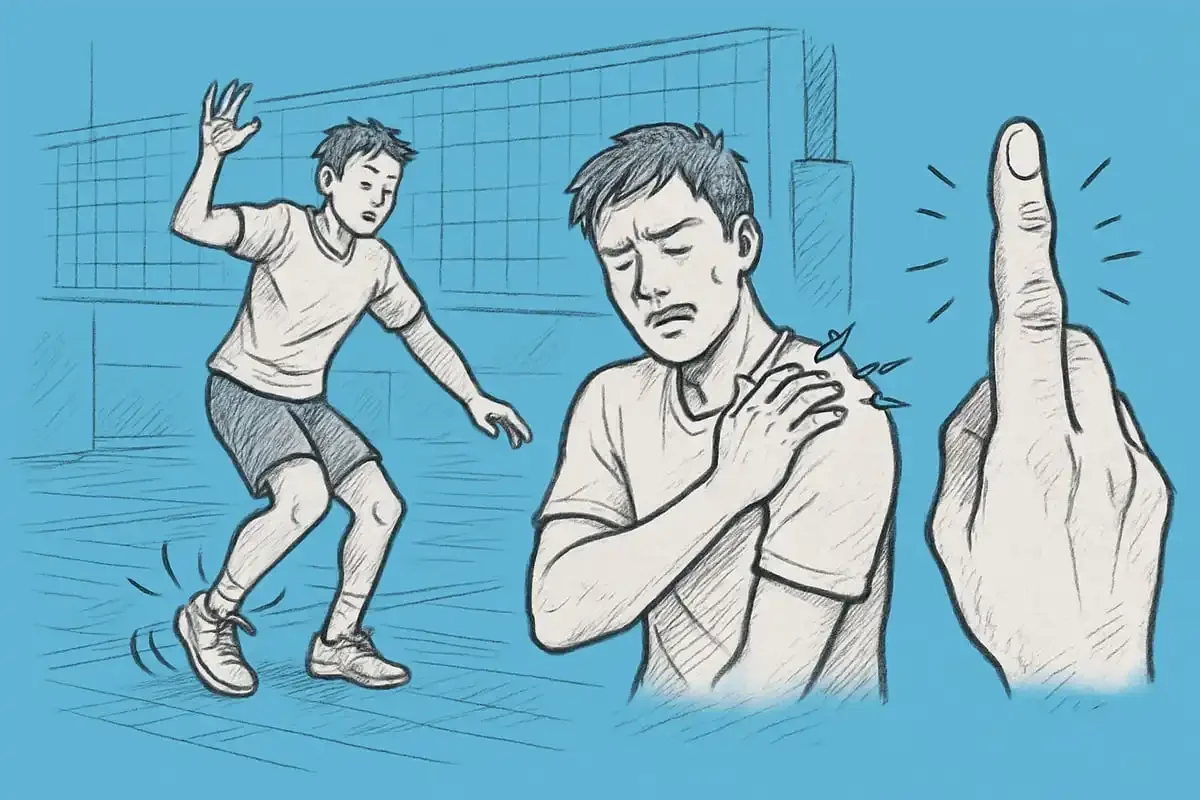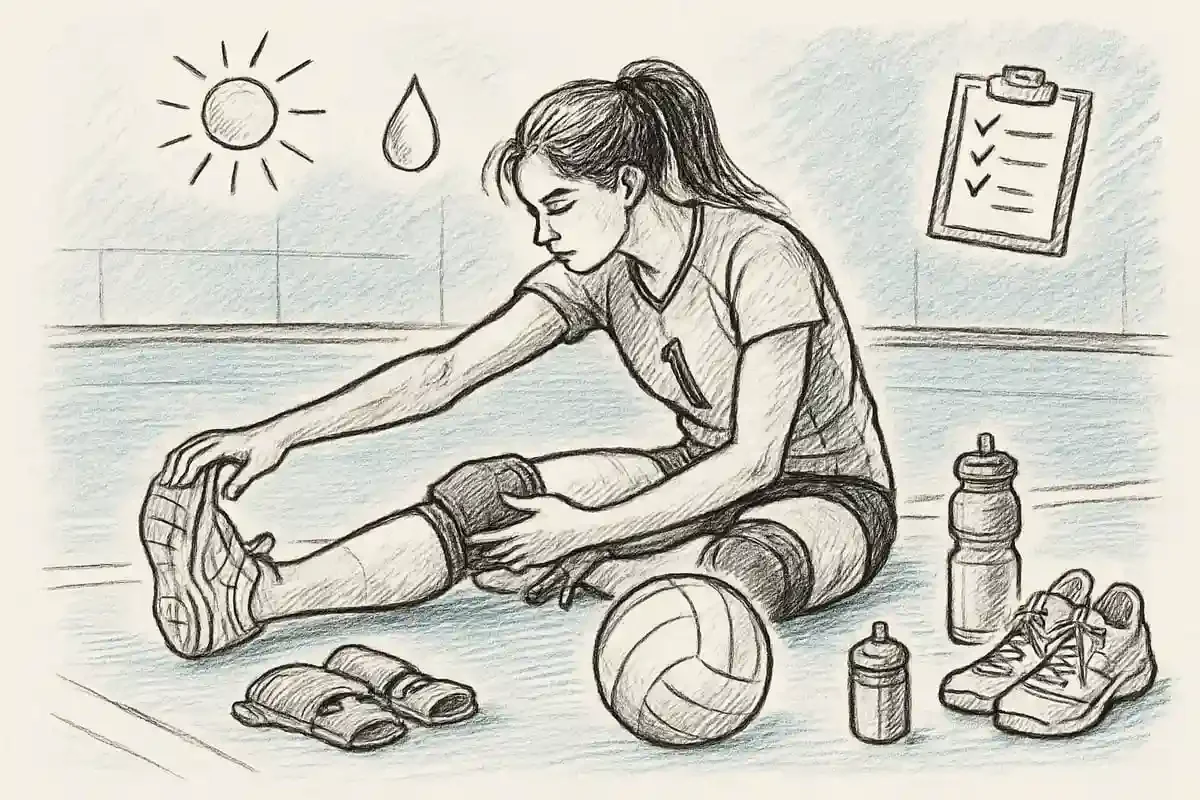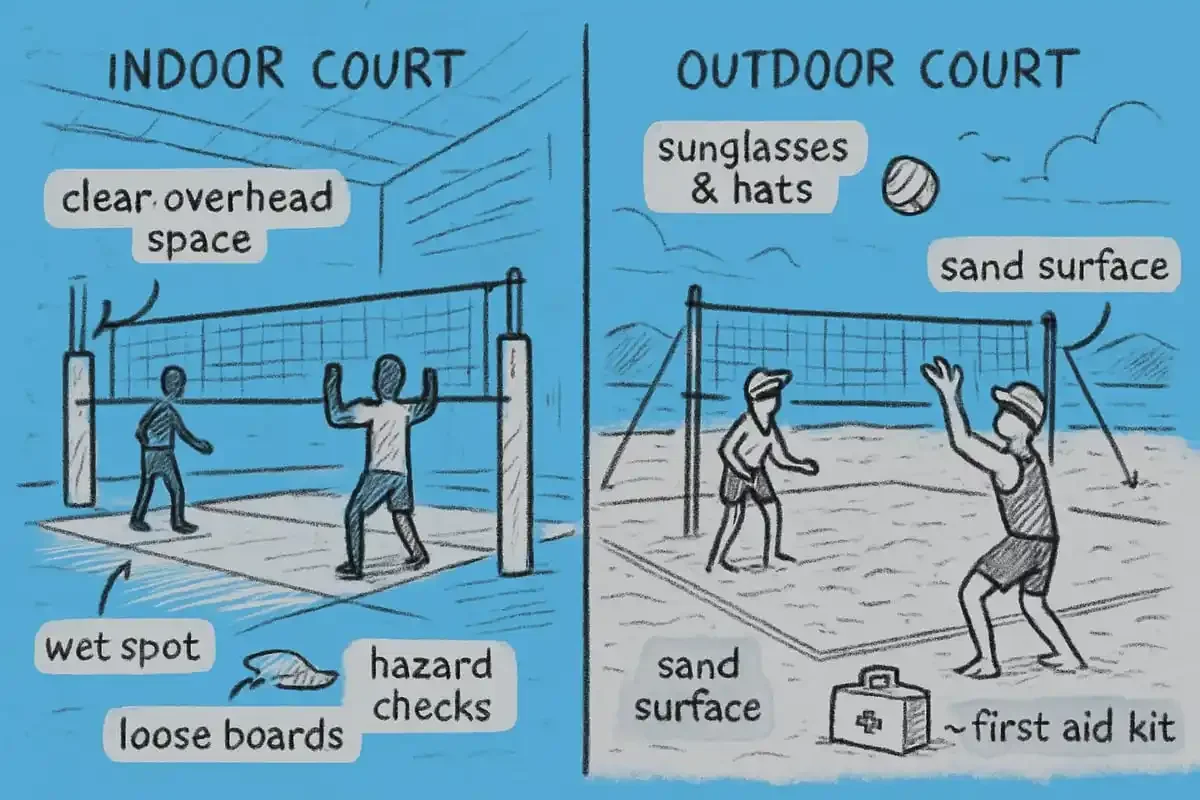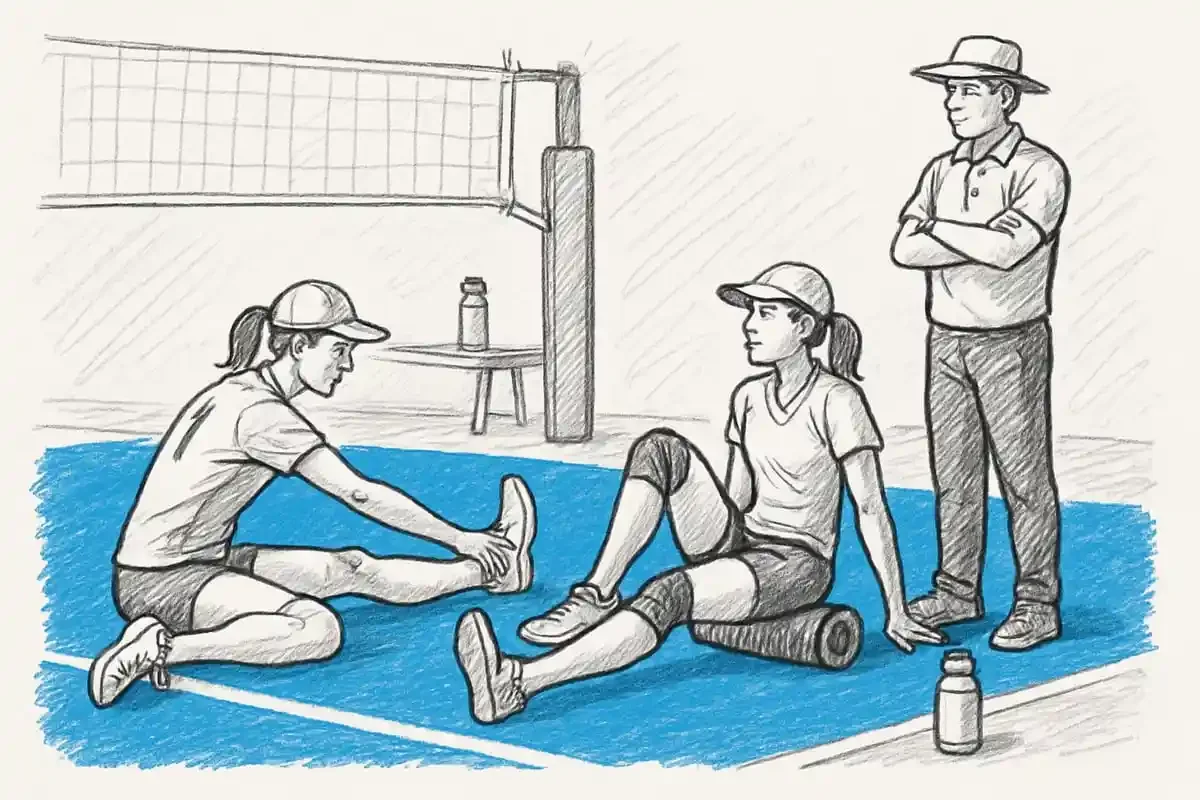North Vancouver Practitioner's Guide to Volleyball Injury Prevention
Did you know that over 183,000 volleyball-related injuries were treated in the US in a single year? Volleyball is more popular than ever, offering tremendous benefits for physical fitness and teamwork. Yet, the risk of injury is real for both beginners and seasoned players. That’s why this guide delivers the most up-to-date volleyball injury prevention strategies for 2025. You’ll discover the most common injuries, their causes, and practical prevention tips covering equipment, environment, overuse, and safe return-to-play. Ready to stay on the court and out of the doctor’s office? Start building safer volleyball habits today.
Understanding Volleyball Injuries: Types and Causes
Volleyball is fast-paced and exciting, but it comes with real injury risks. Knowing the types, causes, and impacts of injuries is the first step in effective volleyball injury prevention. Let’s break down what players, coaches, and parents need to know.
Common Volleyball Injuries
Some injuries occur more often than others in volleyball. The most common include ankle sprains, rotator cuff tendinitis, finger sprains, and knee injuries like patellar tendonitis. Even though the rate is about four injuries per 1,000 women’s college volleyball games or practices, more than 183,000 injuries are treated annually in the US.
Repetitive overhead actions like spiking, blocking, and serving can cause overuse injuries. Acute injuries happen from jumping, landing, or colliding with teammates or the net. For example, a valgus collapse during landing can cause an ACL injury, while blocking can lead to jammed fingers. If you want a deeper dive into specific injuries, check out Common volleyball injuries.
How Volleyball Injuries Happen
Understanding the mechanisms behind injuries is crucial for volleyball injury prevention. Many injuries result from improper landing techniques, poor form, muscle imbalances, or lack of on-court communication.
Playing indoors or outdoors brings different risks. Indoor courts might have a poor court surface that doesn't allow sliding while trying to dig, while outdoor sand courts could hide debris. Year-round play or insufficient rest boosts injury risk, too.
Risk Factors for Injury
Several factors increase the likelihood of volleyball injuries. Age and experience matter—young athletes may be more vulnerable due to developing bodies, while adults might have lingering issues from past injuries.
Pre-existing conditions, poor conditioning, and lack of flexibility all add to the risk. Skipping warm-ups or cool-downs is a common mistake. Playing on unsafe surfaces or using worn-out equipment can also lead to problems.
Prioritizing volleyball injury prevention means addressing these risk factors before they lead to missed playing time.
Impact of Injuries on Performance and Participation
Injuries don’t just hurt physically, they can sideline players for games or entire seasons. Chronic pain and recurring injuries may even push athletes to quit volleyball early.
Psychological effects are real, too. Players often lose confidence or develop a fear of re-injury. This can affect their performance and overall enjoyment of the sport.
Early intervention and a proactive approach to volleyball injury prevention help athletes stay healthy, confident, and active for the long term.
Step-by-Step Injury Prevention Strategies for Volleyball Players
Staying healthy on the court takes more than skill and passion. With volleyball injury prevention, planning ahead and following best practices can keep you playing your best all season. Let’s break down exactly what you should be doing at every stage for maximum protection.
Pre-Season and Off-Season Preparation
The foundation of volleyball injury prevention starts before the first serve. Entering the season in shape boosts performance and reduces injury risk. Build a balanced fitness routine that includes aerobic workouts, strength training, and flexibility exercises.
Start with lower-impact activities if you’ve had time off and. Gradually increase intensity and jump count over several weeks. Focus on areas like the upper back, shoulders, glutes, and legs—these muscle groups are crucial for volleyball stability and power.
A solid preseason program can help prevent fatigue, overuse, and sudden injuries. Make sure every athlete gets a tailored plan for their needs and goals.
Warm-Up and Cool-Down Protocols
Proper warm-ups and cool-downs are essential for volleyball injury prevention. Begin each session with dynamic movements such as marches, thoracic rotations, and shoulder circumduction. This increases blood flow and prepares muscles for action.
After playing, switch to static stretching to maintain flexibility and reduce soreness. Spend at least 10 minutes on each routine. Research shows that cold muscles are more likely to get hurt, so never skip your warm-up.
Consistent routines help players stay limber and resilient. When in doubt, err on the side of more movement and stretching.
On-Court Techniques and Communication
Many injuries can be avoided with good technique and teamwork. Volleyball injury prevention means learning to land softly, with knees bent and feet shoulder-width apart.
Communication is key. Always call for the ball to avoid collisions with teammates. Some teams see fewer injuries just by improving how they talk on the court.
Practice these habits every session. Strong skills and clear communication are your best defense against accidents.
Hydration, Sun Protection, and Environmental Awareness
Staying hydrated and protected from the elements is a big part of volleyball injury prevention. If playing for over an hour, consider taking sport drinks to replenish carbohydrates and electrolytes.
For outdoor play, use SPF 15 or higher sunscreen, wear hats/visors, and choose sunglasses with UV protection. Inspect courts for hazards like glass, rocks, or wet spots before every match.
Dehydration and environmental risks can quickly derail your game. Make these checks a routine part of your preparation.
Equipment and Apparel for Injury Prevention
The right gear makes a huge difference in volleyball injury prevention. Wearing knee pads can cushion falls and dives.
Choose shoes with good ankle and arch support, plus shock-absorbing soles. Ankle supports are a smart addition for players with a history of sprains. Replace worn equipment immediately to avoid preventable injuries.
Strengthening and Flexibility Exercises
Targeted exercises are the backbone of volleyball injury prevention. Focus on shoulder and rotator cuff strengthening to reduce the risk of tendinitis. Core and lower body workouts support stability and help prevent knee injuries.
Balance and proprioceptive training, like single-leg stands or landings, can further protect against falls and sprains. For more detailed routines and prehab strategies, check out these Prehab and injury prevention tips.
Consistency is key. Add these tips to your weekly schedule and track your progress.
Role of Coaches and Parents in Prevention
Coaches and parents play a vital role in volleyball injury prevention. Teach athletes about risks and safe techniques from day one. Monitor training loads and ensure players get enough rest and recovery time.
Enforce safety rules and correct poor form immediately. Be prepared with first aid knowledge and keep emergency contacts on hand. A supportive environment helps athletes stay confident and healthy.
Working together, coaches, parents, and players can build a culture of safety that lasts all season.
Creating a Safe Volleyball Environment
A safe playing environment is the bedrock of effective volleyball injury prevention. Whether you play indoors or outdoors, the right setup and careful attention to detail can dramatically reduce the risk of injury for every athlete. From court checks to emergency plans, let’s break down what makes a truly safe volleyball environment.
Court and Facility Safety
Routine court inspections are essential for volleyball injury prevention. Support poles and wires should be padded and covered. Inspect the floor for wet spots, loose boards, or debris before every session.
Outdoor courts demand extra vigilance. Scan for rocks, glass, or uneven sand that could cause ankle injuries. These protocols help teams catch hazards before they cause harm, making volleyball injury prevention a team habit.
Game and Practice Management
How you structure games and practices plays a big role in volleyball injury prevention. Rotate positions to avoid repetitive strain on the same joints and muscles. Limit high-impact drills and enforce regular rest breaks for hydration.
Active supervision lets coaches spot unsafe behaviors quickly and correct technique immediately. Addressing risk factors on the fly makes volleyball injury prevention practical, not just a theory. Keep practices varied and purposeful to protect athlete health.
Equipment Maintenance and Upgrades
Quality gear is crucial for volleyball injury prevention. Always check shoes for worn treads or broken laces. Replace knee pads or ankle supports when needed. Make sure nets and poles are stable, padded, and free of rust or sharp edges.
Environmental Considerations: Indoor vs. Outdoor Volleyball
Indoor and outdoor volleyball each present unique challenges for volleyball injury prevention. Indoors, hard surfaces can increase the risk of ankle and knee injuries, while walls pose collision risks. Outdoors, sun exposure and dehydration are major threats.
For sand courts, check the surface for hidden objects and be mindful of heat. Encourage players to wear sunscreen, hats or visors, and sunglasses. Adapt your prevention strategies to match the environment, making volleyball injury prevention an ongoing process.
Emergency Preparedness and First Aid
Being prepared for emergencies is a non-negotiable part of volleyball injury prevention. Coaches should be trained in first aid and CPR. Always keep a well-stocked first aid kit and ice packs courtside.
Develop a clear emergency action plan for severe incidents like concussions or fractures. Make sure everyone knows how to contact medical personnel quickly. These protocols ensure that if injuries do occur, athletes get immediate care, supporting the broader goal of volleyball injury prevention.
Preventing Overuse Injuries and Burnout in Volleyball
Overuse injuries and burnout are two of the biggest threats to volleyball players at every level. With the sport’s fast pace and repetitive movements, it’s easy to overlook how quickly strain can build up. Understanding the risks and acting early are essential parts of volleyball injury prevention.
Understanding Overuse Injuries
Overuse injuries happen when the same muscles or joints are stressed repeatedly without proper recovery. In volleyball, this often means rotator cuff tendinitis, jumper’s knee, or even stress fractures. These issues are more common in players who practice all year or focus on just one sport.
Studies show that overuse accounts for a growing percentage of volleyball injuries, especially among youth athletes. The main causes include repetitive jumping, serving, and hitting, which can all wear down tendons and joints over time. A strong focus on volleyball injury prevention is needed to reduce these risks.
Training Load Management
Managing how much and how often you train is a cornerstone of volleyball injury prevention. Young athletes should not specialize too early and have dedicated times throughout the year where they take a step back from volleyball play and training. Cross-training with other sports can help balance muscle development and reduce repetitive strain.
It’s also important to schedule regular days off and take breaks between seasons. Coaches and parents should monitor for signs of overtraining, like constant fatigue, pain, or declining performance. Smart training plans keep athletes healthy, motivated, and competitive.
Rest and Recovery Best Practices
Rest is not a sign of weakness—it’s a key part of volleyball injury prevention. Athletes need adequate sleep for their bodies to repair and grow stronger. Active recovery days, where players do light activity or stretching instead of intense drills, help prevent muscle breakdown.
Tools like foam rollers, massage, and gentle stretching can ease sore muscles and speed up healing. If pain lingers or worsens, it’s important to seek medical advice. Listening to your body is one of the best ways to avoid long-term problems.
Psychological Wellbeing and Motivation
Keeping volleyball enjoyable is crucial for both performance and long-term participation. Burnout is common, with about 70% of young athletes quitting sports by age 13 due to factors such as excessive physical and mental pressure resulting in burnout. Focusing on fun, teamwork, and personal goals helps players stay engaged and motivated.
Parents and coaches have a big role in creating a supportive environment. They should celebrate effort and improvement, not just wins. This positive approach is a hidden but powerful part of volleyball injury prevention.
When to Seek Professional Help
Some symptoms should never be ignored. Swelling, significant loss of motion, and pain that persists despite rest all signal the need for professional care. Early intervention can stop a minor problem from becoming chronic, keeping players in the game longer.
Sports medicine professionals like those at Mountain Health and Performance, offer guidance on safe return-to-play and ongoing volleyball injury prevention. For more expert tips and exercises, check out these injury prevention resources and education designed for athletes, coaches, and parents.
Safe Return-to-Play Protocols After Injury
Returning to volleyball after an injury requires a careful, structured approach to ensure long-term health and peak performance. Following the right volleyball injury prevention protocols can help athletes avoid setbacks and build confidence as they rejoin their team.
Criteria for Returning to Play
Athletes should meet specific criteria before resuming full volleyball activities. The first step in volleyball injury prevention is ensuring all symptoms are improving and the load on the injured area is progressed in a way that does not hinder the healing process.
Full range of motion and muscle strength should match the uninjured side. Medical clearance from a physician or qualified healthcare provider is essential, especially after serious injuries like concussions. Rushing back too soon can lead to re-injury or chronic problems.
A simple checklist for safe return includes:
Minimal pain or swelling, not made worse with loading
Normal strength and flexibility relative to opposite side, or normative data
Ability to perform sport-specific movements
Health practitioner clearance
By meeting these criteria, players set a strong foundation for safe volleyball injury prevention and a successful comeback.
Gradual Return-to-Play Steps
Jumping straight back into full competition is risky and can undo weeks of recovery. Volleyball injury prevention guidelines emphasize a gradual, stepwise approach. Athletes begin with light aerobic activities, then progress to volleyball-specific drills at low intensity.
Each stage introduces more complexity and intensity, monitoring for any return of symptoms. For example, concussion protocols require athletes to remain symptom-free at each stage before moving forward. Only after passing all steps should full practice and competitive play resume.
For detailed recovery protocols, refer to USA Volleyball Health and Recovery Resources, which offer up-to-date return-to-play frameworks. This approach supports both safety and confidence for athletes.
Preventing Re-Injury
Even after a safe return, maintaining volleyball injury prevention habits is crucial. Athletes may need to use braces or supports for added stability, especially in the early phases back on the court. Ongoing conditioning and flexibility routines help restore full function and guard against future injuries.
Education is vital. Players should learn to recognize early warning signs of trouble, such as mild pain, swelling, or reduced performance. If symptoms return, immediate rest and evaluation can prevent a minor issue from becoming serious.
Top tips for preventing re-injury:
Continue physical therapy exercises
Wear protective gear as recommended
Communicate any discomfort to coaches or trainers
These steps reinforce volleyball injury prevention and keep athletes healthy throughout the season.
Long-Term Injury Prevention Habits
The journey does not end with a return to play. Long-term volleyball injury prevention requires athletes and teams to build safety into everyday routines. Coaches and trainers should perform regular assessments of technique and strength, addressing any weaknesses or imbalances.
Integrating prevention strategies, such as dynamic warm-ups, strength training, and flexibility work, keeps players resilient. Building a culture focused on health and open communication supports both physical and mental well-being.
By prioritizing volleyball injury prevention year-round, teams can reduce the risk of setbacks and foster a positive, sustainable sports environment.
Latest Advances and Resources in Volleyball Injury Prevention
Staying ahead with the latest advances is crucial for effective volleyball injury prevention. In 2025, the landscape is shifting rapidly as new technologies, evidence-based programs, and community outreach combine to keep athletes safer and healthier. Let's explore what is making a difference right now.
Innovations in Injury Prevention for 2025
Recent years have brought exciting innovations to volleyball injury prevention. Wearable sensors now track player workload and movement patterns in real time, helping coaches spot risky trends before injuries occur.
Updated dynamic warm-up protocols are being adopted widely, emphasizing agility and functional movement. Advances in sports nutrition, like targeted hydration strategies and recovery supplements, further support athlete resilience.
If you are curious about how training interventions can boost agility and strength, check out this Enhancing Volleyball Athlete Performance Study. These breakthroughs are setting new standards for injury prevention in volleyball.
Evidence-Based Programs and Resources
A wealth of evidence-based programs now guide volleyball injury prevention. The STOP Sports Injuries campaign provides clear guidelines for athletes, parents, and coaches to follow. Specialized ACL injury prevention classes and return-to-play protocols are making a real impact.
Online resources offer routines for strengthening, stretching, and recovery. Many teams use these tools to reduce injury rates and boost performance. Staying informed about these programs is key for any athlete or coach committed to long-term health.
Role of Multidisciplinary Care Teams
Volleyball injury prevention now relies on a collaborative approach. Multidisciplinary care teams bring together doctors, chiropractors, physical therapists, athletic trainers, and even sports psychologists.
This teamwork ensures that every aspect of an athlete's health, from physical to mental, is addressed.
With this comprehensive care, athletes get tailored treatment plans and ongoing support, reducing the risk of recurring injuries.
Educational Outreach and Community Initiatives
Education is the backbone of effective volleyball injury prevention. Workshops and clinics help coaches, parents, and players learn the latest techniques and safety practices. Many schools and clubs now host regular programs focused on preventing common injuries.
Accessible resources, including downloadable handouts and online videos, make it easy for athletes to practice prevention strategies at home. By building community awareness, these initiatives empower everyone involved in volleyball to prioritize safety and well-being.
Taking care of your body is just as important as mastering your volleyball technique—especially if you want to stay strong and injury free all season. Whether you’re dealing with aches from a tough practice or you want to keep your muscles in top shape for peak performance, expert hands can make all the difference. At Mountain Health and Performance, you can tap into over 30 years of sports injury know how and personalized care. Ready to give your body the support it deserves? Book with one of our practitioners today and feel the difference for yourself.




